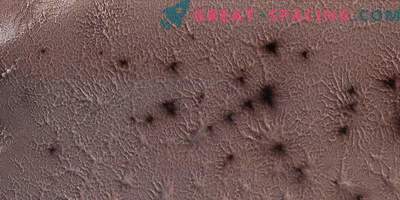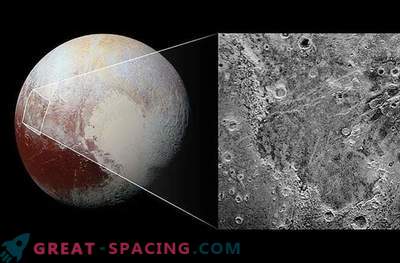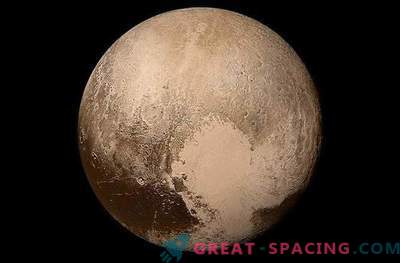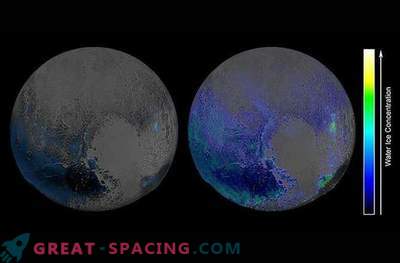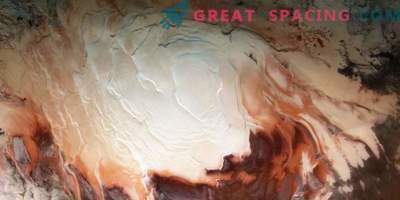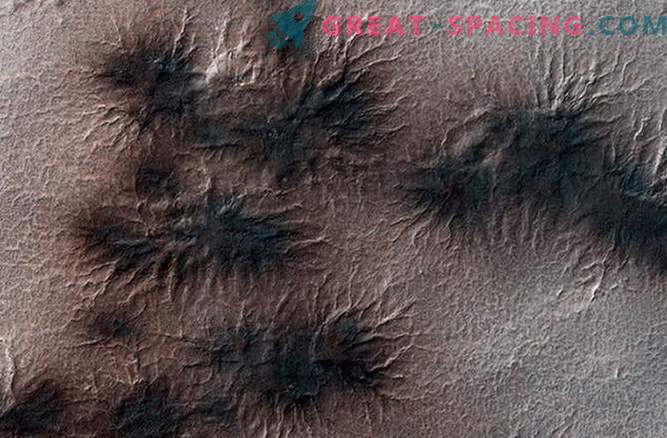
A geyser season begins on Pluto — a time when sunlight hits the icy north pole of a dwarf planet and causes eruptions of nitrogen ice and gas that is sprayed onto the surface, leaving dark patterns in the form of spiders.
This is what some astronomers and scientists hope to see when the New Horizons spacecraft reaches the dwarf planet in July.
Such guesses came to us thanks to some interesting observations made over the years with the help of ground-based telescopes and the Hubble Space Telescope, which cannot examine any features on the surface of Pluto, but can confirm that over the past four years the surface of a dwarf planet subject to change.
“We’re almost certain that there is some kind of ice movement,” says Bonnie Buratti of NASA’s Jet Propulsion Laboratory. Evidence in the form of light curves collected by telescopes shows how the planet reflects light as it rotates around its axis.
These light curves were compared to previously modeled light curves, which implied that ice was static on polar caps and in other places. However, the simulated light curves did not correspond to what astronomers have been observing for several years on Pluto. "We compared them with the data of the last four years and received significant changes," added Buratti.
Changes occur at a time when Pluto is moving away from the Sun, but at the same time its north pole is tilted towards the Sun. This creates a northern summer.
"We are very close to the discovery of the polar summer and the process of sublimation on Pluto," she said, referring to the process by which ice enters the gas state, bypassing the liquid phase.
The sun's rays (even with the current position of Pluto, which is 32 times farther from the Sun than the Earth) must be strong enough to penetrate the ice-cold nitrogen, which most likely covers the polar cap of Pluto. Ice can hide enough energy in gas pockets. This gas will build up pressure until it breaks through the surface, spraying icy nitrogen crystals on the surface.
This process seems far-fetched, except for the fact that researchers have already observed this phenomenon earlier on other worlds.
“Similar processes occur on the polar caps of Mars,” says astronomer Grande of Lowell Observatory in Arizona.
A huge amount of carbon dioxide sublimates on Martian polar caps when it heats up on the Sun, leaving not only mysterious patterns, but also increasing seasonal atmospheric pressure throughout the Red Planet.
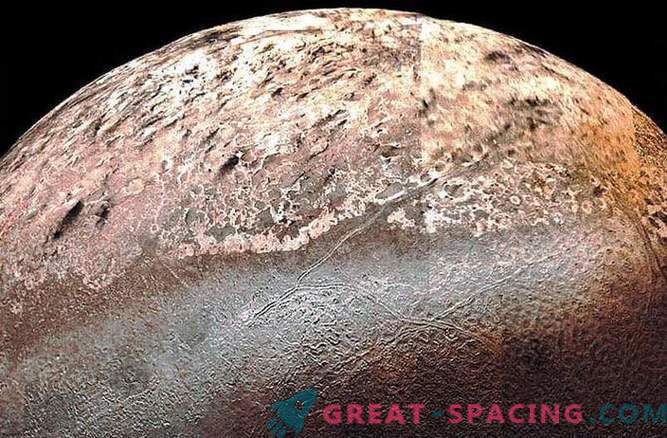
Triton's Icy Polar Hat
Moreover, there is a more similar analogue: Triton - Neptune’s icy moon. Triton is much colder and farther from the Sun than Mars, and is considered a true twin of Pluto. Like Pluto, Triton's primary gas is nitrogen (carbon dioxide on Mars). Sediments on the surface of Triton were witnessed by the Voyager 2 spacecraft back in 1989.
"Both (Mars and Triton) have powerful streams of ice that break out of the poles," said Buratti.
The final test of this idea will be the passage of the New Horizons mission, which will rush alongside Pluto and within six days will collect a huge amount of data that will allow astronomers to reconsider all the blurry images and changes in the color of the dwarf planet.
